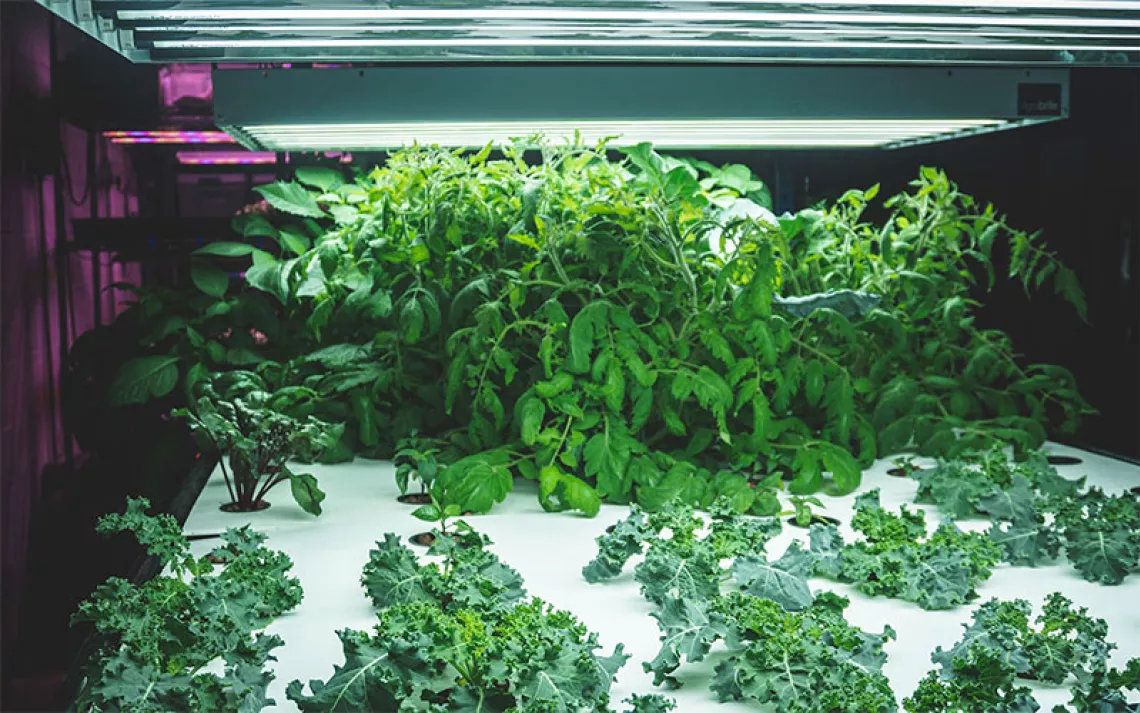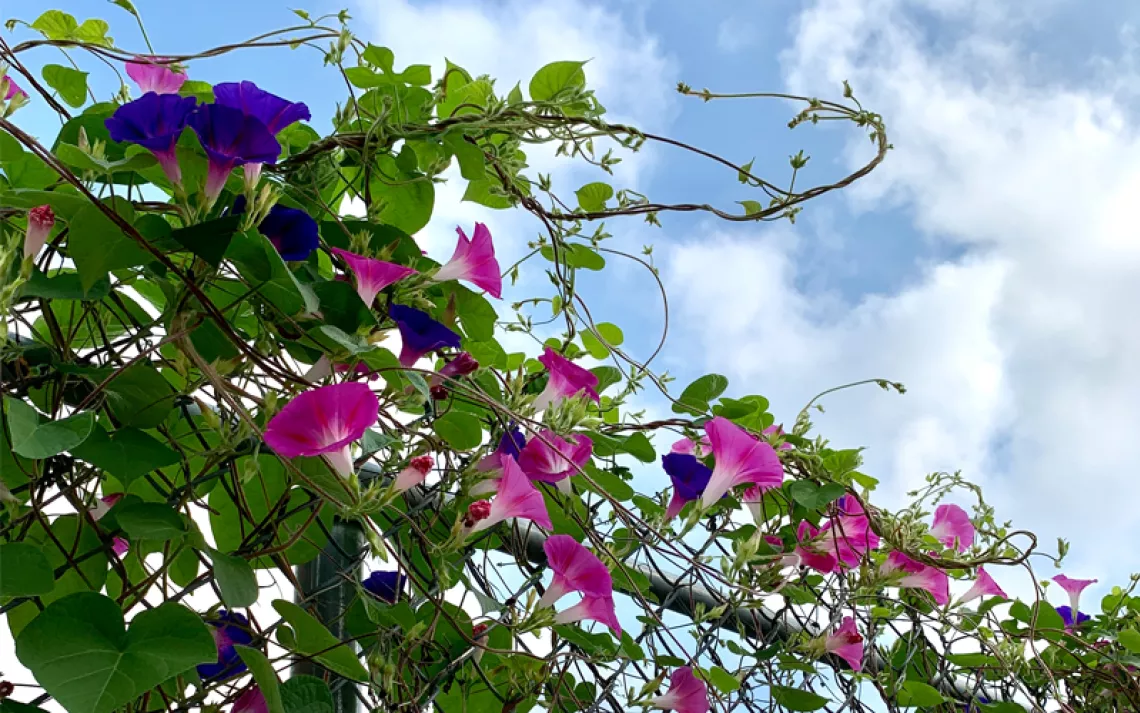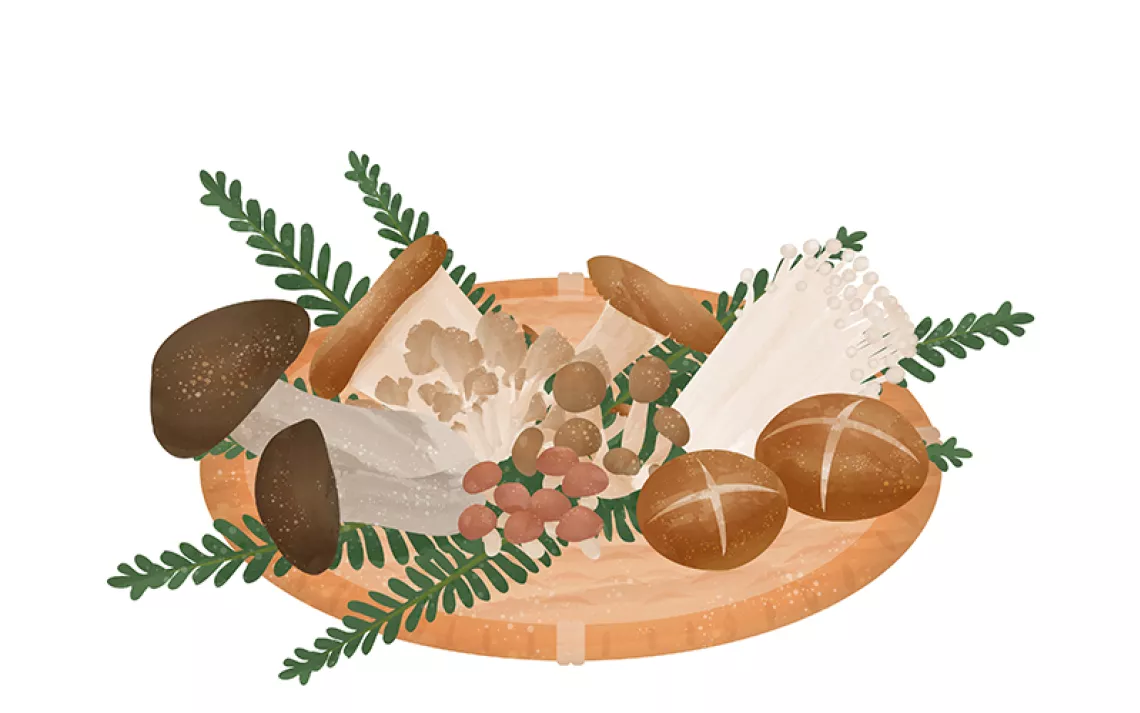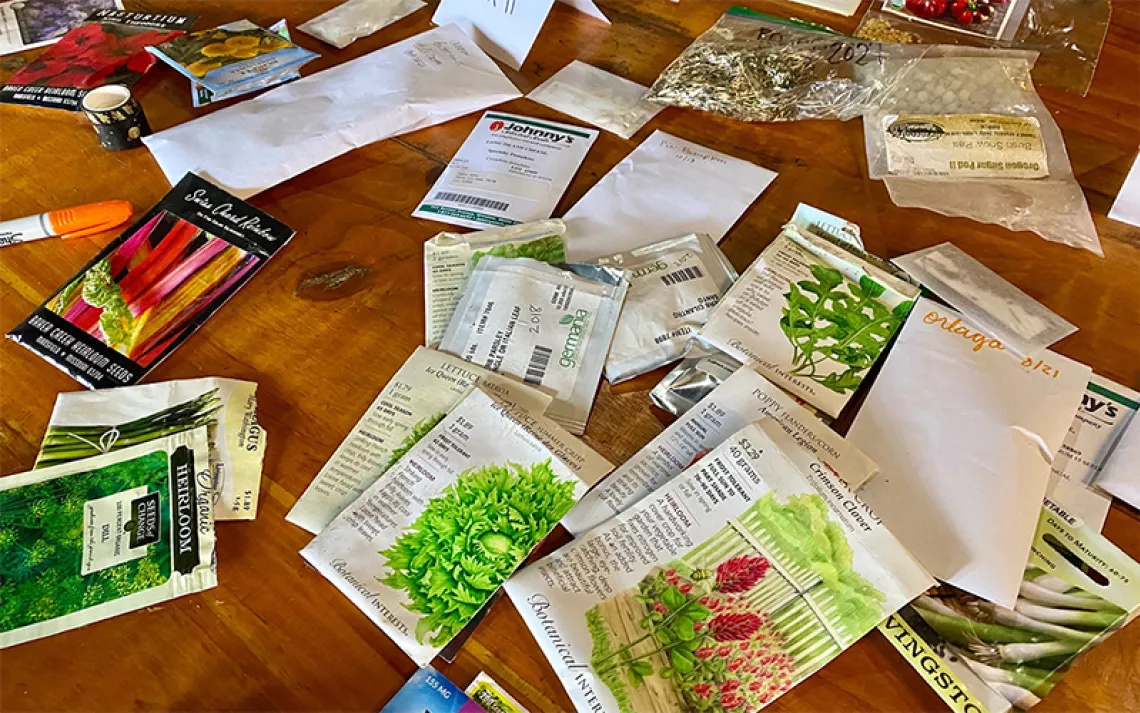Get Lucky This St. Patrick’s Day
Four-leaf-clover enthusiasts share pro tips on finding, growing, and preserving

Photo courtesy of Jan Fisher
Eight-year-old Evan Shin picked a lucrative quarantine hobby. He spent last summer in Moose Jaw, Canada, where he and his younger brother, Ethan, went out looking for four-leaf clovers every day. They ended up finding hundreds.
Shin, an enterprising third grader who thinks he might grow up to be a businessman, doctor, or actor, convinced his parents to set up an Etsy shop to sell his dried, laminated clovers. The endeavor has been so successful that his supply is running low. Now back home in Chicago, Shin plans to start scouting out new lucky patches, as soon as the weather allows.
The Etsy shop is a family operation. Shin oversees the collection process, granting himself and his brother 30-second breaks for every 30 minutes of searching. They press the four- and five-leaf clovers in their dad’s medical textbooks, then their mom handles lamination and distribution. Shin also includes a handwritten note with every order. Preserving clovers, he’s learned, can be a delicate process.
“When I took the clovers out [of the books], I broke the five-leafs, and Ethan broke the four-leafs, and then they turned into two-leafs, one-leafs, three-leafs, which are the worst,” Shin says. His very first six-leaf clover, a rare find, got left out in the sun and fell apart. But he says—and his mom agrees—that he’s gotten a lot better at keeping the clovers intact.
Shin plans to donate 10 percent of his Etsy earnings to saving the endangered green sea turtle and wants to spend the rest on stock in electric cars, “because gas hurts the earth.” He’s looking forward to resuming his clover search.
Legend holds that a clover’s three leaves stand for faith, hope, and love. The fourth leaf symbolizes luck. But for Shin, it’s not a matter of luck.
“I don’t feel that lucky because it’s so easy to find them,” he says.

Evan and Ethan Shin | Photo courtesy of Jason and Grace Shin
Another accomplished clover collector, Lucca Deserah, began finding clovers as a child in their Florida backyard. Deserah, who uses they/them pronouns, now spots four-leaf clovers everywhere. They credit the knack to their natural propensity to notice patterns.
“I think it comes along with being autistic,” Deserah says. “I started noticing that four-leaf clovers would sort of pop out in a patch. It’s because of the different shapes that it holds compared to the three-leaf clovers around it.”
The more Deserah practiced recognizing clover patterns, the faster they got at finding outliers, frequently hitting double digits in a matter of minutes. They like to take their glasses off to search. For them, the blurriness makes breaks in the pattern easier to see.
People with autism tend to be adept at pattern recognition, the prevailing strategy employed by neurodivergent and neurotypical clover enthusiasts alike. It’s inefficient to count the leaves on individual clovers. Most avid collectors save time by scanning whole patches for variation.

Now is the time for environmental journalism.
Sign up for your Sierra magazine subscription.
With this action you affirm you want to receive Sierra Club communications and may vote on policy designated by the Sierra Club Board.
One of the first things Deserah did after moving to Pittsburgh two years ago was to walk around their yard in pursuit of four-leaf clovers. It’s not a big yard, but they soon came across one of the “luckiest” patches they’ve ever found and discovered other lucky patches around the neighborhood.
“Clover hunting is sort of like a favorite pastime, so it’s something that makes me comfortable with my surroundings,” Deserah says.

Lucca Deserah creates art out of many of the four-leaf clovers they find.
How Rare Are They, Really?
Identifying a four-leaf clover is more complicated than it looks. At the Botanical Research Institute of Texas, digitization coordinator Ashley Bordelon has been inspecting clovers pressed long ago. Of the herbarium’s more than 1 million specimen sheets, just over 500 contain white clover, or Trifolium repens. There’s some debate about what clover variety is the authentic Irish shamrock, but the white clover is widely believed to produce true four-leaf clovers. Bordelon found just six four-leaf clovers across all the sheets.

Photo courtesy of BRIT Herbarium
White clover, native to Europe and central Asia, can be found in every US state and most Canadian provinces. Before moving to remote work because of COVID-19, Bordelon frequented a patch of white clover right outside the herbarium, where she found plenty of four-leaf specimens of her own.
“That’s just one of the coolest things to me, I mean, the fact that you can find pockets of nature just outside your house or in your backyard,” she says. “You don’t have to go far to find a lucky clover if you really want to.”
It can be easy to mistake similar-looking plants for white clover, like the shamrock-shaped wood sorrel and the naturally four-leaf water clover—which, despite its name, is actually a kind of fern. White clover is a member of the bean family. It’s identifiable by the white crescent on the leaves and by its white or light-pink flowers and usually grows low to the ground in dense mats. Some enthusiasts also collect other varieties, like red and crimson clovers.
White clovers have twice as many pairs of chromosomes as humans, and their gene expression is more complicated. Researchers believe that four-leaf clovers are caused by a combination of genetic and environmental factors. But if one four-leaf clover is present, more are likely nearby. And the same plants usually produce four-leaf clovers year after year.
It’s generally accepted that about one in 10,000 clovers has four leaves. What’s less clear is where that figure came from, or whether it’s accurate. Lidia and Uli Sperling say it’s not.
Like Shin and Deserah, Lidia has been finding clovers since childhood, and later introduced Uli, her husband, to her hobby. Uli, who holds a PhD in plant sciences, went looking for a primary source for the one-in-10,000 figure. He couldn’t find one.
“It turned out, digging a bit deeper, that all these references on the internet were going in circles, and one was quoting the other,” he says. So he and Lidia built their own database, beginning at home in Bern, Switzerland, and expanding outward. Over the next several years, they developed their own methodology and looked at 7 million clovers in eight different countries.
Based on their findings, they estimate the prevalence of four-leaf clovers at about one in 5,040, five-leaf clovers at one in 23,000, and six-leaf clovers at one in 340,000. They’ve found three seven-leaf and one eight-leaf—too few to measure their prevalence with any certainty. (As far as folklore is concerned, there’s some dispute about whether clovers with five or more leaves bring extra luck or bad luck.)
For the Sperlings (pictured, below), though, the clover survey is just a side project. Their main goal is to share the joy of finding clovers with others. Before COVID-19, they would often search for four-leaf clovers while traveling, usually attracting attention from curious passersby. They’re not concerned about whether the clovers really bring luck; the pleasure lies in the quest itself. And they’re not alone in that pursuit.

Jan Fisher discovered her first four-leaf clover in the sixth grade while doing a headstand. She, too, found them sporadically over the years. But it was a brain aneurysm, diagnosed nearly seven years ago, that ultimately earned her the office nickname,“the clover lady.”
As Fisher, then 51, underwent a series of ineffective brain surgeries that left her with harrowing complications; she temporarily lost her vision and had to give up her career in podiatry and wound care. She and her son moved back into her parents’ house in SeaTac, where old friends helped to care for them. Throughout her lengthy recovery, Fisher—often clad in pajamas and slippers—collected four-leaf clovers from the backyard and laminated them to give to the people who were supporting her. “It was my way to pay forward what was given to me. I couldn’t repay them with money, and I couldn’t say thank you enough.”
Fisher also brought clovers to the hospital with her. She handed them out to the staff and gave one to each of her surgeons before surgery.
“I’m fortunate to still be upright,” she says. “I don’t know if it had anything to do with the clovers. But I’ll guarantee you, every time I had that clover with me. And they still say I should not be here.”
 While Fisher’s found plenty of four-leaf clovers (one of which is pictured, right) in the wild—she says she once picked 295 four-, five-, six-, and seven-leaf clovers in two and a half hours—she cultivates them too. Instead of picking all the four-leaf clovers she finds, Fisher sometimes digs up whole plants and replants them in pots outside her house. She experiments with each step of the process and documents it meticulously. Her clover nursery now produces hundreds of four- to nine-leaf clovers every week.
While Fisher’s found plenty of four-leaf clovers (one of which is pictured, right) in the wild—she says she once picked 295 four-, five-, six-, and seven-leaf clovers in two and a half hours—she cultivates them too. Instead of picking all the four-leaf clovers she finds, Fisher sometimes digs up whole plants and replants them in pots outside her house. She experiments with each step of the process and documents it meticulously. Her clover nursery now produces hundreds of four- to nine-leaf clovers every week.
Since recovering from her surgeries, Fisher, who works as a patient care coordinator in Seattle, thinks she’s given out more than a thousand clovers and has another two thousand stored in three-ring binders. She hands them out to coworkers and struggling patients, hides them around the city (often posting clues on her Facebook page), and asks cashiers at grocery stores and drive-thrus to pass them along to the people behind her. They usually do.
“I don't know what possesses me to keep doing it, but it feels good,” she says. “It makes somebody happy. And I love it even more when it's anonymous and they don't know, and it's unexpected. That's my favorite thing to do.”
Grow Your Own Lucky Clovers
What you’ll need: Potting soil (optional), a pot, and a partly shaded area. Fisher recommends starting the search equipped with a wet paper towel, a plastic baggie, and a trowel, spoon, or knife.
Getting the plant: Look for an especially green, vibrant clover patch, and scan for breaks in the pattern. Once you find a plant with at least one four-leaf clover, dig way down, being careful not to break the stem. As long as it has a root system, the plant can regrow. If you’re not using potting soil, take enough soil from near the patch to fill your pot. And if you can’t replant immediately, wrap the clover in the wet paper towel, blow air into the bag, and seal it inside. It’ll last up to a week. Replant it in the pot—Fisher has found clovers will only grow well outside—and water immediately after planting.
Caring for your plant: Keep your clover in partial sun and water it every day. “You cannot overwater these things. They’re like thirsty little fiends,” Fisher says. She prefers to use leftover water from her dogs’ bowls. If that's not an option, she suggests letting tap water sit overnight before using it to water the clover. When the pot starts to get crowded, dig up some of the runners and replant them in a new pot. Don’t be discouraged if the clover appears to die in the winter. If it’s healthy, it’ll come back in the spring.
Preserving the clovers: There are plenty of ways to dry clovers. Fisher’s preferred method is to lay them on a paper towel and press them between a magazine and a heavy book. She lets them dry for a week. Then she’ll laminate them using a laminator she bought online, let them cool, cut them down to their intended shape, laminate them a second time, and then give them away.
 The Magazine of The Sierra Club
The Magazine of The Sierra Club



